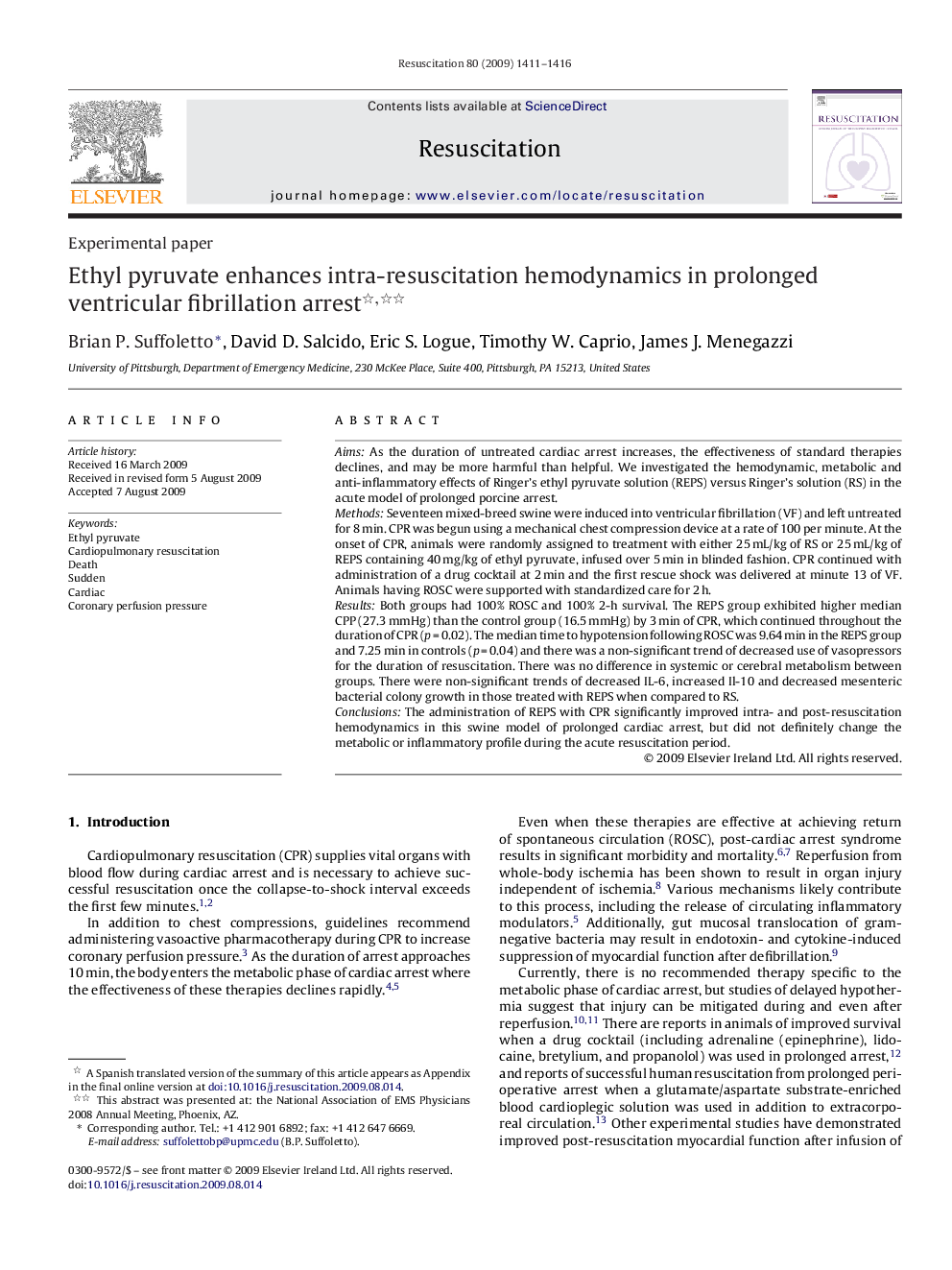| کد مقاله | کد نشریه | سال انتشار | مقاله انگلیسی | نسخه تمام متن |
|---|---|---|---|---|
| 3009382 | 1578999 | 2009 | 6 صفحه PDF | دانلود رایگان |

AimsAs the duration of untreated cardiac arrest increases, the effectiveness of standard therapies declines, and may be more harmful than helpful. We investigated the hemodynamic, metabolic and anti-inflammatory effects of Ringer's ethyl pyruvate solution (REPS) versus Ringer's solution (RS) in the acute model of prolonged porcine arrest.MethodsSeventeen mixed-breed swine were induced into ventricular fibrillation (VF) and left untreated for 8 min. CPR was begun using a mechanical chest compression device at a rate of 100 per minute. At the onset of CPR, animals were randomly assigned to treatment with either 25 mL/kg of RS or 25 mL/kg of REPS containing 40 mg/kg of ethyl pyruvate, infused over 5 min in blinded fashion. CPR continued with administration of a drug cocktail at 2 min and the first rescue shock was delivered at minute 13 of VF. Animals having ROSC were supported with standardized care for 2 h.ResultsBoth groups had 100% ROSC and 100% 2-h survival. The REPS group exhibited higher median CPP (27.3 mmHg) than the control group (16.5 mmHg) by 3 min of CPR, which continued throughout the duration of CPR (p = 0.02). The median time to hypotension following ROSC was 9.64 min in the REPS group and 7.25 min in controls (p = 0.04) and there was a non-significant trend of decreased use of vasopressors for the duration of resuscitation. There was no difference in systemic or cerebral metabolism between groups. There were non-significant trends of decreased IL-6, increased Il-10 and decreased mesenteric bacterial colony growth in those treated with REPS when compared to RS.ConclusionsThe administration of REPS with CPR significantly improved intra- and post-resuscitation hemodynamics in this swine model of prolonged cardiac arrest, but did not definitely change the metabolic or inflammatory profile during the acute resuscitation period.
Journal: Resuscitation - Volume 80, Issue 12, December 2009, Pages 1411–1416